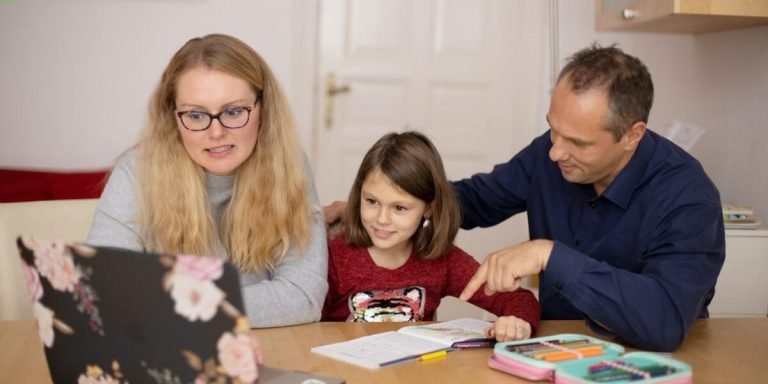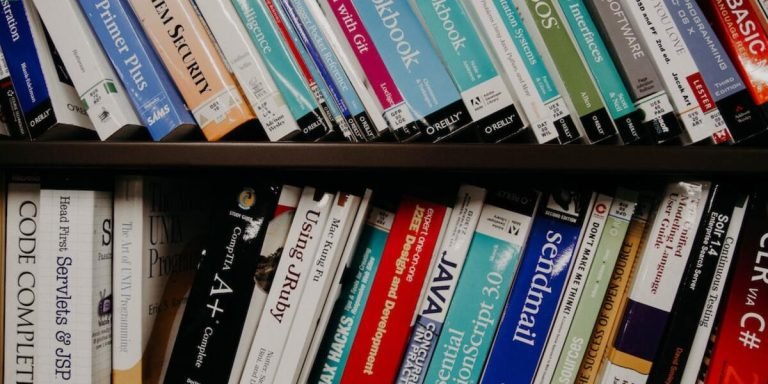Classroom Smartboard: Integrating Technology in Early Childhood Education
The digital age has revolutionized various aspects of life, including the way we educate our children. Integrating technology in early childhood education is a substantial stride towards preparing youngsters for the future, and one such tool making significant waves is the classroom smartboard.
Classroom smartboards not only bring interactivity to learning but also open up an avenue where lessons are more engaging and easily understandable by young minds. These boards have become essential tools that connect teachers and students in an interactive setting while promoting collaborative learning experiences among peers.
Did you know?
Did you know that interactive whiteboards or smartboards can accelerate learning in young kids by up to 16%? A study published in “Technology, Pedagogy and Education” confirms this.
The Evolution of Classroom Smartboards in Modern Education
Smartboards, a quintessential technological tool, have innovatively redefined the landscape of modern education. Initially utilized only by progressive early adopters and tech-savvy educators, now in 2023 they’ve become an indispensable element in classrooms across all levels of academia. These interactive displays act as digital whiteboards – fostering student engagement through visual representations and hands-on interaction.
The evolution journey began with basic projectors that transformed traditional blackboard spaces into dynamic platforms for displaying PowerPoint presentations or video content. It then transitioned to smartboards which incorporated touch-sensitive screens allowing teachers to manipulate data directly on the board giving life to previously static lessons.
Today’s classroom smartboards are highly sophisticated devices that incorporate advanced software applications working seamlessly together with user-friendly hardware interfaces. They enable educators not just to present information but also create collaborative learning environments where students can actively participate using their own connected handheld devices such as tablets or smartphones.
From bridging gaps between different learner styles via multi-modal instruction methods to allowing remote participation from home-bound students – the advent of smartboard technology has truly revolutionized teaching methodologies, favorably impacting both teaching efficacy and student outcomes appreciably.
Significance and Impact on Teaching Methods
The substantial impact of classroom smartboards on teaching methods can be defined as a transformative shift in education. Their integration into modern classrooms has significantly shaped the learning experience, affirming their importance within educational technology.
As dynamic instructional tools, classroom smartboards reflect sophisticated leaps from traditional chalk-and-talk pedagogy to interactive and engaging methodologies. The use of these intuitive systems seamlessly blends new teaching strategies with conventional ones – revamping educators’ approach towards imparting knowledge.
Incorporating classroom smartboards for lesson delivery aids visual learners who thrive on visually appealing content presented through videos or animations. Equipped with multi-touch features, teachers no longer need whiteboard markers; they can manipulate digital objects directly with fingers or styluses—reducing clutter while fostering an inclusive ambiance that caters to different learning styles.
Moreover, implementing these devices offers opportunities for real-time collaboration—classroom lessons become more interactive as students co-create content alongside their peers. It also encourages active participation since each learner’s contribution becomes visible via this board—a clear advantage enforced by technology incorporation in education.
Classroom Smartboards make it possible to demonstrate complex theories simply – diagrams are drawn effortlessly; multimedia presentations offer comprehensive explanations about intricate topics such math equations or historical events—an aspect impossible using only textbooks and lectures because showing is indeed better than telling!
Furthermore, assessment techniques have radically changed due to classroom smartboard usage—the introduction of quizzes conducted through student-response-systems ensures immediate feedback thus accelerating progress tracking efficiently compared to manual grading methods prevalent earlier.
Interactive Learning: From Theory to Practice
The educational landscape has been remarkably transformed by the advent of technology, and one such example is the use of “classroom smartboards”. These interactive tools have revolutionized traditional learning methods, converting abstract theories into appealing digital content that captivates young minds.
Classroom smartboards began as simple replacements for white or black boards. However, their evolution in modern education goes far beyond being mere electronic writing surfaces. Now they serve as a hub connecting various digital resources to provide an immersive learning environment where students can actively participate rather than passively listen.
Classroom smartboards are increasingly commonplace in schools worldwide, seamlessly transitioning theory into practice. Let’s examine the ways these devices facilitate interactive learning:
1) Dynamic Presentations: Classroom smartboard allows teachers to create dynamic presentations with slideshows incorporating images, audio-visual clips and animations related to subjects like history or science which makes it easier for kids to comprehend complex topics.
2) Real-time Interactions: Instead of merely watching things unfold before them on screen, students now interact with lessons directly on the board — this hands-on interaction helps reinforce understanding through active participation.
3) Collaborative Learning Environment: Multiple children can work together on projects using a classroom Smartboard fostering teamwork among pupils from an early age; something regular chalk-and-board settings would struggle achieving.
Enhancing Student Engagement through Smartboard Technology
Smartboard technology has emerged as one of the most powerful tools in a modern classroom. In essence, it is an interactive whiteboard that incorporates touch detection for user input – similar to how you would use your smartphone or tablet. The implementation of this innovative tool within educational institutions marks a significant shift toward technological integration in education.
Incorporating smartboards into classrooms amplifies student engagement significantly. These screens provide visual and auditory elements not possible with traditional teaching methods – from interactive maps exploring global geography to digital dissection diagrams illustrating biology lessons; possibilities are infinite. Moreover, their versatility allows educators to cater their teaching styles & subject matter according to diverse learning preferences among students.
Learning becomes more collaborative when using a smartboard since it encourages participation by enabling multiple users at once through its touch-sensitive display features. This fosters teamwork while also making sessions much more dynamic than passive chalk-and-talk lectures had ever achieved previously – instilling critical problem-solving skills amongst pupils along the way.
Also important; this technology promotes environmental preservation efforts by reducing dependence on paper-based resources typically associated with conventional school systems, aligning perfectly with socially responsible practices prevalent today in 2023’s landscape.
Overall, enhancing Student Engagement Through Smartboard Technology stands testament towards harnessing tech benefits optimally for improved quality and effectiveness within study curriculums- heralding bright futures ahead amidst these digitally empowered learners across generations.
Gamification Strategies in Curriculum Delivery
One such shift comes through ‘gamification.’ This strategy involves applying game-design elements into non-gaming contexts like teaching and learning. With gamified lessons on a classroom smartboard, educators can enhance student engagement significantly.
1. Interactive Learning: Classroom smartboards create immersive experiences with 3D animations or interactive simulations pertinent to the subject matter. For example, if students learn about marine life ecosystems – why just show them flat images when they can virtually dive underwater?
Such hands-on activities spark curiosity while making complex concepts easier to understand.
2.. Leader-boards & Rewards System: Just as video games have leader-boards and rewards system for top performers, education technologists have applied similar principles here too! Scores based on quizzes answered right or tasks performed faster add competitive spirit driving students towards better performance.
5 Ease In Accessibility Of Resources And Materials :
Real-time Collaboration and Feedback Mechanisms
In today’s digital age, real-time collaboration and feedback mechanisms that harness classroom smartboard technology are playing a pivotal role in boosting student engagement. These interactive display interfaces have transformed the dynamics of conventional teaching methods by imparting more visually rich and engaging learning experiences.
Collaboration is at the heart of effective learning. Classroom smartboards act as an excellent tool to foster collaborative skills among students. It allows multiple users to interact with its touchscreen simultaneously, promoting group activities and class discussions right on the board.
This level of interaction provides students with a unique opportunity for hands-on exercises which can include everything from problem-solving tasks to creative brainstorm sessions – all conducted directly on one shared screen!
Moreover, this integration brings forward instantaneous accessibility where everyone has their ideas heard promptly without any delay or miscommunication hassle, expanding possibilities within peer-to-peer instruction paradigm alongside traditional teacher-led instructions.
Feedback plays equally important part in shaping learner’s growth curve positively too! By using these innovative platforms teachers can give immediate feedback regarding assignments or projects displayed live during classes thereby helping learners rise above shortfalls swiftly through prompt redressal mechanism facilitating accurate understanding and retention.
Smartboard as a Tool for Inclusive Education
As we cruise through the 21st century, technology integration in education has taken a front seat. One such invention that stands out is the classroom smartboard – an essential tool for inclusive education. With it being more than just a high-tech replacement of traditional chalkboards or white boards, smartboards have shown substantial improvements in engaging students and help building inclusivity.
Smartboards offer an interactive platform where all learners can participate actively. The touch-sensitive display connects to computers and projectors allowing teachers to deliver dynamic lessons with digital content. This means everyone learns at their own pace—a stride ahead towards fostering inclusive classrooms without leaving any student behind.
The utilization of technology like this also encourages collaborative learning among children as they’re no longer bound by ‘one size fits all’ methodology. Smartboards promote ample room for interaction between peers along with enhancing teacher-student discussions which make pupils feel part of the overall teaching-learning process unlike ever before.
With capabilities ranging from live internet streaming, presentation showcase, handwriting recognition software to virtual field trips; these futuristic tools have made pedagogy energizing and relevant in today’s world making them vital components contributing significantly towards integrated educational approaches specifically designed considering diversity present inside our modern day classrooms.
Catering to Different Learning Styles with Adaptive Tech
Utilizing a classroom smartboard is not just about technology integration in education. It’s about reshaping the teaching approach to cater to varied learning styles of students. Inclusive Education strongly advocates for personalized instruction and adaptive tech like Smartboards help achieve this objective.
Firstly, visual learners greatly benefit from displays on Smartboards. They are able to grasp information effectively when it is presented visually through diagrams, charts or animations instead of traditional text-based lessons. The vibrant colors and dynamic flow of elements can stimulate visual learners’ cognition better than static images in textbooks.
Secondly, auditory learners find value in audio features that accompany visuals displayed on Smartboards. Whether it’s verbal explanations accompanying slide shows or educational videos with narratives, these audio-visual combinations reinforce understanding among both visual and auditory learners simultaneously.
Moreover, kinesthetic learners who learn by doing rather than observing also embrace the interactivity offered by Classroom smartboard.. Its touch-sensitive screen encourages physical interaction where children can solve puzzles or draw graphics using their fingers which fosters active learning experiences.
Next comes logical thinkers who need reasons behind everything they learn for proper comprehension . Here again classroom smartboard scores high as teachers have unlimited online resources at their disposal including simulations , graphical models etc allowing them present complex concepts logically .
Bridging the Gap for Students with Special Needs
The advent of technology has revolutionized the educational landscape, presenting unique opportunities for inclusive learning. A prominent player in this tech-driven wave is the classroom smartboard, a tool that’s transforming how students with special needs interact and learn.
Let’s delve into some advantages offered by classroom smartboards:
1. **Visual Learning Enhancement** – Smartboards make use of vibrant colors, charts and videos better than standard desktops or laptops do because they’re large enough for everyone to see clearly from every corner of the room.
2. **Interactive Lessons** – Classroom smartboards not only display content but also actively involve students through interactive lessons where tapping on screens brings new information or animations.
3. **Tailored Instructional Content** – Smartboards facilitate modification and adaptation of instructional material tailored towards individual student’s abilities which takes inclusivity in education up a notch.
4. **Audio-visual Stimulation**: For auditory learners, many classroom smartboard models incorporate sound features like text-to-speech capabilities making it centralized solution suitable for different types of users.
Conclusion
In embracing the digital era, classroom smartboards have become a dynamic catalyst for interactive and engaging learning in early childhood education. This tech tool allows educators to transport students beyond textbook limits while inspiring curiosity that fuels future invention.
Let’s continue this exciting journey of exploring the boundless possibilities technology brings into our children’s educational ecosystem. Remember, here at our website you will find numerous resources on educating young minds as well as indispensable advice for parents and teacher support needs. So feel free to explore further – your next enlightening read is just a click away!







